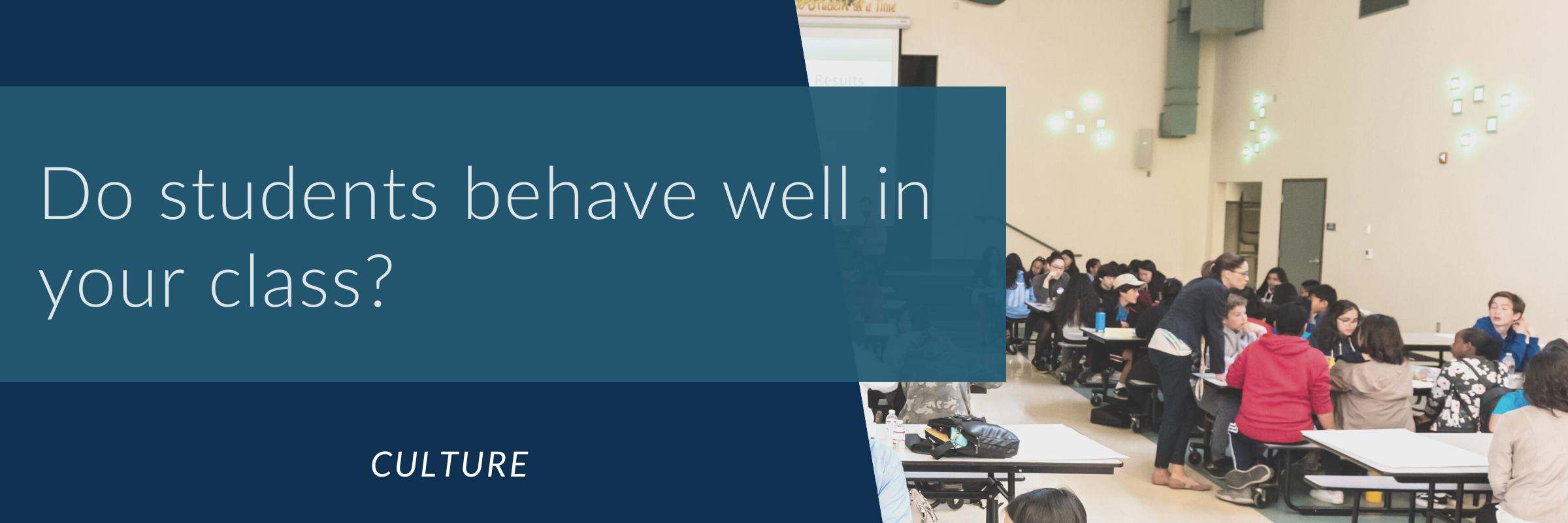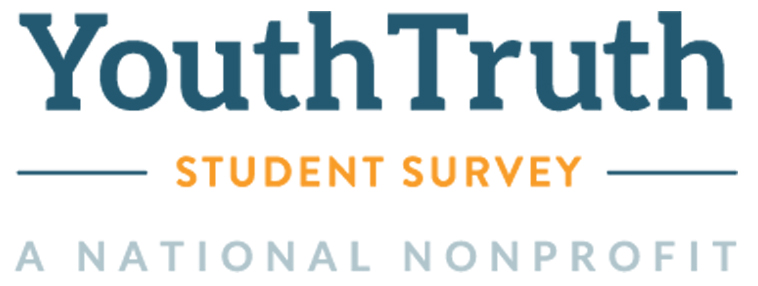
Why does it matter?
The question “Do students behave well in your class” serves as an indicator of how visible and effective classroom management strategies are across a school and its classrooms. Though not always the case, students’ behavior in class can be connected to larger weaknesses in instruction or behavior management systems that can impact learning.
Classroom management strategies
Classroom management is often one of the greatest struggles for new teachers, and can lead to teacher turnover which in turn negatively impacts student outcomes. Drawing form his own experience, Edutopia writer Todd Finley outlines strategies both big and small to help educators create environments where students stay focused and are respectful of each other in this post.
Fundamental principles of classroom management
Follow the first step of hypnosis: Hypnotist’s start by having people focus on something they’re already doing. Similarly, teachers can ask students to do something they are already doing, then waiting for 100 percent compliance. After, it’s safe to issue another directive. Think specific: instead of “pay attention” ask a student to “point your eyes towards the front.” After the student points their eyes towards the front, you could say, “Stop talking, turn to page 80, and write your name on your note paper.”
Keep consequences as minimal as possible: When a student breaks a rule, start with the smallest consequence possible and see if that gets the job done before scaling up. Keep the big consequences only for the situations in which they are necessary or most needed.
Appropriate curriculum is a classroom management strategy: For some students, acting out is easier than seeming dumb in front of their peers. Assigning work with appropriate levels of difficulting (aka, differentiating) is a great way to minimize this risk.
Rehearse transitions: Finley wisely states that most disruption occurs before the bell rings and between the start of activities. There are lots of ways to quickly reset and get a class settled. Finley explains one strategy that works for him called “Silent 30.” When he would say “silent 30,” the class new this was his signal for all students to clear their desks and sit silently within half a minute. After 30 corect transitions, the class was rewarded. Finley also recalls how much students’ loved watching classroom visitors’ jaws drop after seeing how quickly and efficiently the class could do the routine!
Anticipate problems and be creative: Here’s another one to help teachers who practice entry and exit lineup routines. Try asking each student a content-related question, or just a silly question about their favorite superhero power or the worst movie they’ve ever seen, as they enter and take a silent seat at their desk before beginning a Do Now assignment. Students who violate the protocol are sent to the back of the line.
Make positive phone calls home and send letters: Touching base at home about the good things not only makes collaborating when tough situations arise easier, but often trickles down to students’ ears. Finley even went the extra mile to send a fridge magnet home to students’ families with a positive note on it. Students felt more like Finely was an ally, as well as their families.
Quick interventions that support classroom management
Show students that it pays to behave: Raffle tickets — for both academic effort and good behavior — are one example Finley offers of small rewards for good behavior. In turn, the behavior of other students turns into models for how other students might get their raffle ticket the next day.
Never punish an entire class: There are always some kids following the directions. Punishing a whole class usually only incites further resistance.
Build content-related anticipation: Try introducing a day’s content by hinting — and this is a good place to get creative — at what students will learn that day. Examples where what will be learned is connected to a greater chain of events, a larger context, or students lives is best. For example, one might introduce a lesson about clean water by stating that students will learn “how to cure cholera.” Setting an agenda that peaks students’ interest can mitigate misbehavior.
Change the tone: There are a number of ways one can interrupt a class of aggressive complainers. Finley recounts keeping the song “Walking on Sunshine” by Katrina and the Waves on his CD player (these days, it might be your laptop…) to make everybody laugh and win back his classes attention. If there were any straggler complainers, Finley would just hit play again. Students would laugh more, resulting in an even stronger — and more necessary — tone change.
Find things to appreciate: Call out what (and which students, making sure to change it up often though so that favoritism doesn’t become a class divide) is the right kind of behavior. Look for things to delight in. Instead of shutting down a student for playing music in class, compliment their knowledge of the genre be it hip hop or country. Instead of grumbling about how you need more coffee to keep up with students, gleefully delight in how you still have a few sips of your coffee left and that there’s more to learn that day.
